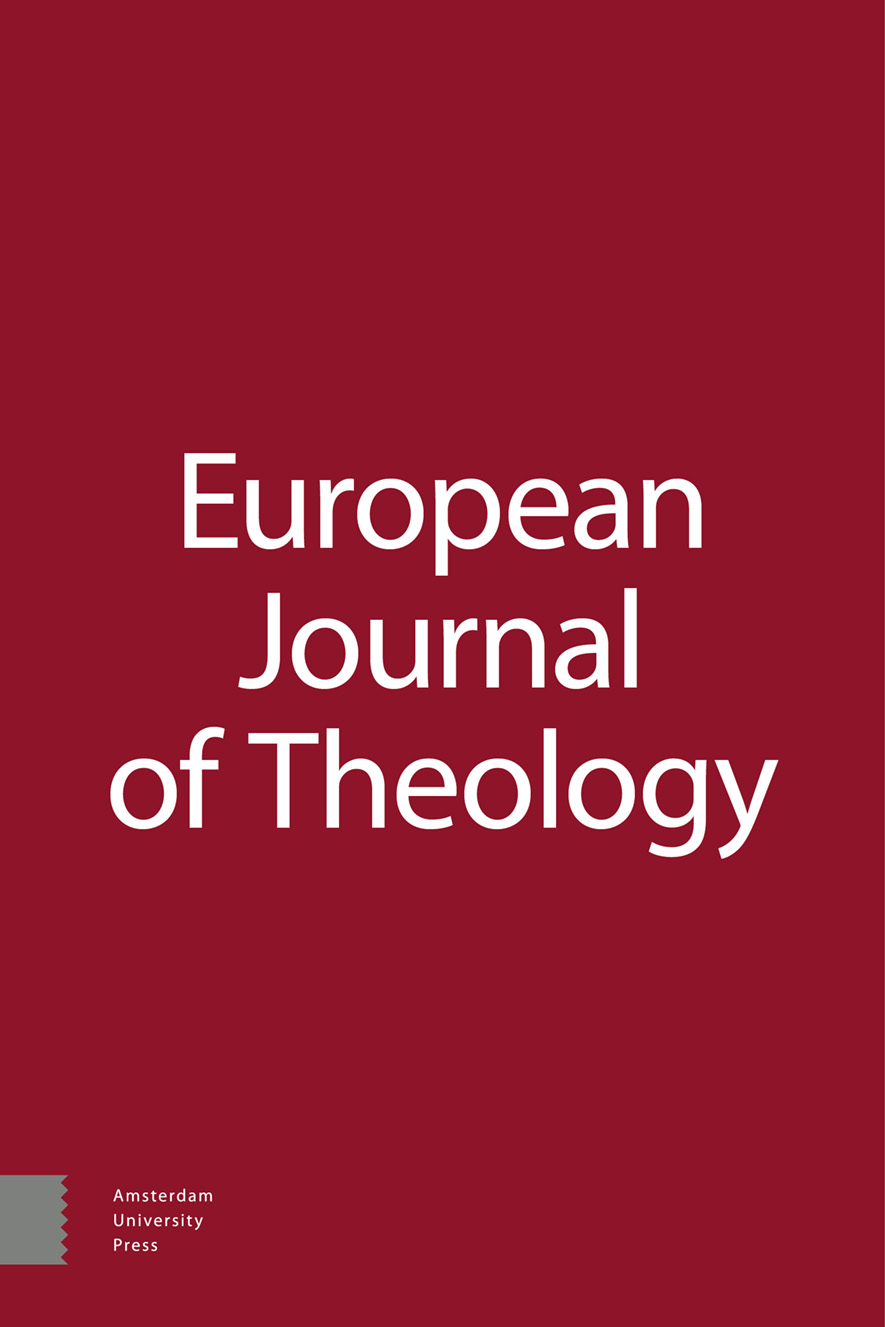-
oa Beyond Barr – Biblical Hebrew Semantics at its Crossroads
- Amsterdam University Press
- Source: European Journal of Theology, Volume 30, Issue 1, Mar 2021, p. 19 - 36
-
- 01 Mar 2021
Abstract
This survey article comments on the history of biblical semantics from the beginning of the nineteenth century to the present time. This period of 200 years is divided into three phases, each of which is governed by a predominant paradigm: 1) The era of biblical philology was heavily influenced by the ideas of Wilhelm von Humboldt. 2) Linguistic structuralism was promulgated to biblical scholars by James Barr since the 1960s. 3) The present time, still dominated by structuralism, has nevertheless seen the rise of a new paradigm, namely, cognitive linguistics. Within this domain, particularly frame semantics and the theory of conceptual metaphors have the potential to bring fresh insights to biblical semantics, exegesis and theology. This development is illustrated by means of some examples from the field of biblical Hebrew.
Zusammenfassung
In diesem Überblicksartikel wird die Geschichte der biblischen Semantik vom Anfang des 19. Jahrhunderts bis in die Gegenwart nachgezeichnet. Dieser Zeitraum von 200 Jahren lässt sich in drei Phasen einteilen, in denen jeweils ein Paradigma maßgeblich ist: 1) Die Epoche der biblischen Philologie war stark von den Ideen Wilhelm von Humboldts geprägt. 2) Der linguistische Strukturalismus wurde in den Bibelwissenschaften seit den 1960er Jahren durch James Barr vorherrschend. 3) In der Gegenwart, die immer noch vom Strukturalismus beherrscht wird, zeichnet sich die kognitive Linguistik als ein neues Paradigma ab. Vor allem die Frame-Semantik und die Theorie der konzeptuellen Metaphern haben das Potential, die biblische Semantik, Exegese und Theologie durch neue Erkenntnisse zu bereichern. Das wird durch einige Beispiele aus dem Bereich des biblischen Hebräisch veranschaulicht.
Résumé
Ce survol examine l’histoire de la sémantique biblique du début du XIXe siècle à nos jours. Cette période de 200 ans comporte trois phases, chacune dominée par un paradigme différent: 1) L’époque de la philologie biblique est fortement marquée par les idées de Wilhelm von Humboldt. 2) Dans les années soixante, c’est le structuralisme linguistique de James Barr qui se répand parmi les exégètes. 3) Aujourd’hui, bien que le structuralisme ait encore l’avantage, un nouveau paradigme est né et se développe, savoir la linguistique cognitive. Dans ce domaine, la sémantique des schémas et la théorie des métaphores conceptuelles en particulier peuvent offrir tant à la sémantique biblique, qu’à l’exégèse et à la théologie des perspectives nouvelles. La preuve en est donnée par des exemples tirés du domaine de l’hébreu biblique.


